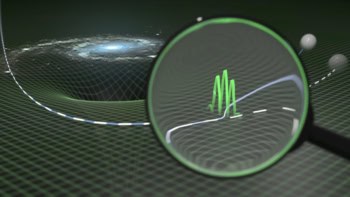Books about gravity, Cavendish lab and dark technologies, reviewed by Matin Durrani, Kate Gardner and Tushna Commissariat

Defining gravity
Since 1995 Oxford University Press has been publishing its Very Short Introductions book series that covers a hugely varying range of topics – from atheism and British cinema to dinosaurs – aimed at a general audience, but written by an expert in the field. It seems surprising then, that a topic as basic as gravity has not been covered, until now. Written by physicist Timothy Clifton at Queen Mary University of London, this little book is a heavyweight, if you will excuse the pun. Split into six chapters, Gravity: a Very Short Introduction will make an excellent primer for students, teachers and, indeed, anyone who is interested in the concept of gravity as we know it today. Unsurprisingly, the opening chapter deals with the history of gravity, beginning with Aristotle and moving on to Galileo Galilei before delving into Isaac Newton and Albert Einstein’s respective treatises on gravity. But Clifton then swiftly moves on to experiment, as the next two chapters talk about testing gravity both within our solar system and beyond, explaining everything from time dilation to pulsars and even introducing devices such as the interferometer. An exciting addition to the book is the chapter on gravitational waves, which, thanks to the amazing discovery made last year by the researchers working on the Laser Interferometer Gravitational-wave Observatory in the US, is no longer theoretical. The final two chapters get a bit more technical as Clifton gets into the nitty gritty of explaining curved space–time, the history of our universe and different cosmological models, before dipping into quantum gravity and the multiverse, while making clear that all of the above are still being investigated. Dig into Gravity to get a rapid refresh of everyone’s favourite fundamental force.
- 2017 Oxford University Press 144pp £7.99pb
Cavendish pioneers
Founded in 1874, the Cavendish Laboratory at the University of Cambridge is one of the most famous physics labs in the world. It was here that J J Thomson discovered the electron, Ernest Rutherford “split the atom”, Francis Crick helped to determine the structure of DNA and James Chadwick discovered the neutron. But the lab’s physicists have accomplished far more besides, as is made clear in Maxwell’s Enduring Legacy: a Scientific History of the Cavendish Laboratory. Written by Malcolm Longair, who was head of the Cavendish from 1997 to 2005, this comprehensive book details in chronological order with the lab’s main scientific achievements based on descriptions from the original scientific literature. Longair focuses squarely on the Cavendish’s research output, but he cannot avoid the politics, personalities and finances of the lab entirely. Indeed, the book’s title pays tribute to James Clerk Maxwell – the lab’s first head – whose philosophy of how to do physics influenced successive generations of Cavendish workers. These days almost 1000 people are based at the lab, with the head of the Cavendish effectively being the “chief executive officer of a middle-sized company”. As a former boss himself, hopefully Longair has the skills to handle any Cavendish staff who find their efforts haven’t been included, for reasons of space, in this well-illustrated and clearly written compendium of current and past successes.
- 2016 Cambridge University Press 664pp £39.99/$69.99hb
A self-inflicted doomsday
In 1859 the Carrington Event – when a solar coronal mass ejection scored a direct hit on Earth’s magnetosphere, leading to a large geomagnetic storm – caused telegraph systems to fail all over Europe and North America. In 1859 there was only limited local electricity generation and few people or businesses relied on electronic communications. A similar event of this magnitude today would be far more problematic, potentially catastrophic, wiping out power and/or communications to millions. This is just the first of several disaster scenarios that physicist Peter Townsend presents in The Dark Side of Technology. It’s also surprisingly likely to happen (events such as the Carrington one have historically occurred every 100–150 years) and the clearest fit for the title of the book. Townsend runs through various types of technology and different reasons for our modern reliance on technology, and extrapolates doomsday scenarios from limited evidence (at least, limited evidence is presented to us here). The majority of the detail and research on display is in the historical background. There are summaries of the history of fertilisers and insecticides, of hygiene and medicine, of beauty and fashion, but few of these lead to a clear argument about technology that has a sinister side. Too often, Townsend relies on hyperbole and historical examples of “unfortunate technologies” that were short-lived precisely because they were unsafe or didn’t work as intended. The scientific explanations are unclear as well – where they are supplied at all. It’s a shame because these are interesting topics.
- 2016 Oxford University Press 320pp £25hb
- Enjoy the rest of the March 2017 issue of Physics World in our digital magazine or via the Physics World app for any iOS or Android smartphone or tablet. Membership of the Institute of Physics required



